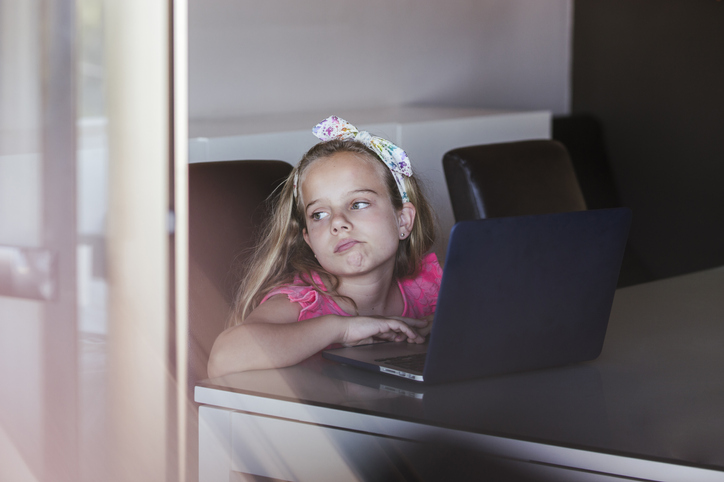 |
| Reducing outdoor time and increasing device use has had deleterious effects on ocular development among kids. Photo: Getty Images. |
The COVID-19 pandemic has forced people worldwide to remain indoors and rely on electronic devices to continue working, learning and interacting with others outside their homes. Unfortunately, less time spent outdoors and use of electronic devices are both associated with an increased risk for myopia. Consequently, a recent study demonstrated a doubled incidence of myopia in a cohort of schoolchildren in China during the COVID-19 outbreak, with evidence that these effects may persist post-pandemic.
Two groups of primary school students were monitored from grades two to three (n=2,679). To evaluate the association between environmental changes throughout the COVID-19 outbreak and the development of myopia, both an “exposure” and “nonexposure” group were established. The exposure group received complete eye exams in November and December of 2019 and 2020. The nonexposure group received exams in the same two months but in 2018 and 2019. The study team observed the following outcomes: cycloplegic spherical equivalent refraction (SER), axial length (AL) elongation and myopia incidence.
The following observations were found when comparing results between the two groups:
Students in the exposure group experienced 0.36D more myopic shift of SER and 0.08mm greater AL elongation than those in the nonexposure group.
The incidence of myopia was 7.9% higher in the exposure group than in the nonexposure group.
Grade three students in the exposure group had 0.35D more myopic SER than in the nonexposure group.
The prevalence of myopia in grade three in the exposure group was 7.5% higher than in the nonexposure group (20.8% vs.13.3%, respectively).
In November and December 2020, 49% of students without myopia in grade three had SER greater than -0.50D and less than or equal to +0.50D, 17.9% higher than in the year prior.
The proportion of grade three students with myopia more severe than -1.80D increased from 3.6% to 5.4% from November and December 2019 to November and December 2020.
“SER increased two-fold toward myopia during the period from November and December 2019 to November and December 2020,” the researchers wrote in their paper. “AL elongation sped up about 1.4-fold, and the incidence of myopia doubled.” Because China achieved a more controlled state of disease spread earlier on in the pandemic, these findings may present a concern about the lingering effects of environmental changes during COVID-19 on myopia development and prevalence.
“In our study sample, nearly half of the children without myopia in grade three in November and December 2020 demonstrated SER greater than -0.50D and less than or equal to +0.50D, compared with the proportion of approximately 30% in November and December 2019,” the researchers wrote. “Because these children are deemed to be at risk of developing myopia, we are concerned that the incidence of myopia may remain high over the next few years. Moreover, behavior changes, including reduced time outdoors and increased digital learning, may persist beyond the period of the pandemic, heightening the risk of a prolonged acceleration in the progression of myopia.”
The researchers caution that further investigation is warranted on the ongoing effects following the COVID-19 outbreak to determine whether this upward trend in myopia prevalence in schoolchildren will be sustained. As much as possible, children should be encouraged to spend less time in front of screens and more time on the playground, which has been proven again and again to help lower myopia risk.
Hu Y, Zhao F, Ding X, et al. Rates of myopia development in young Chinese schoolchildren during the outbreak of COVID-19. Jama Ophthalmol. September 16, 2021. [Epub ahead of print]. |

